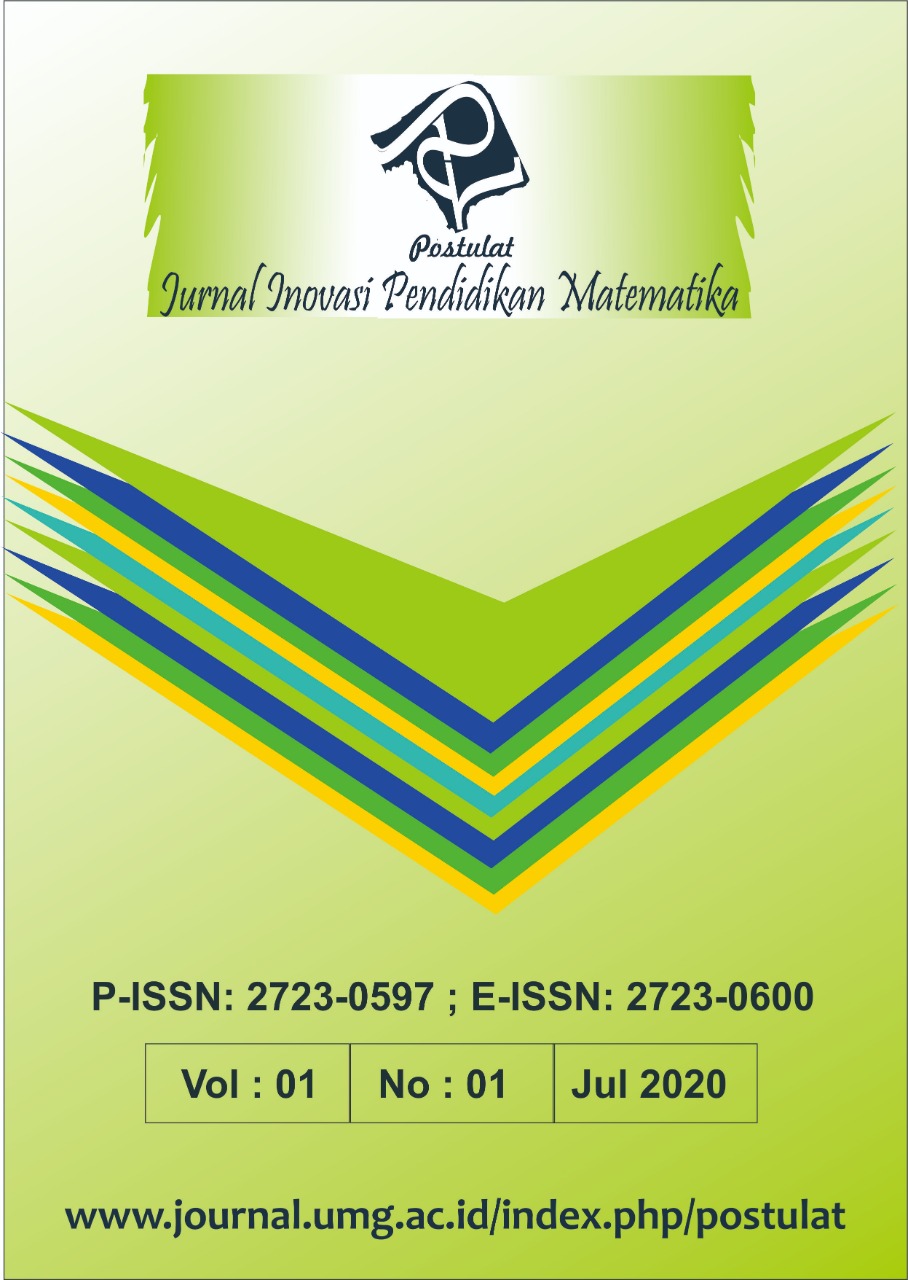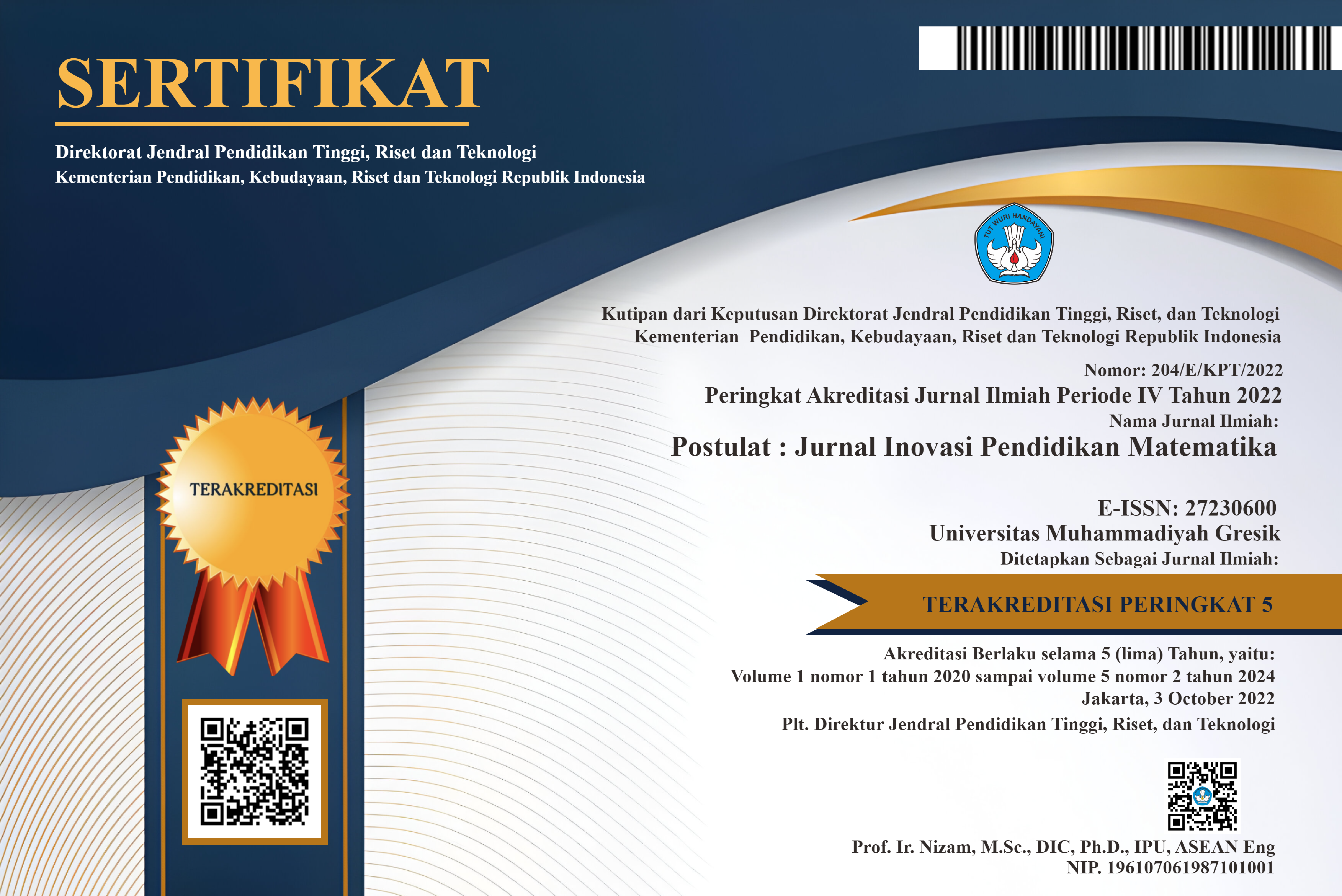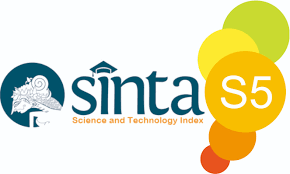Analisis Peserta Didik dalam Menyelesaikan Soal Pisa Ditinjau Dari Self-Efficacy Peserta Didik
DOI:
https://doi.org/10.30587/postulat.v1i1.1775Keywords:
Ability to Solve Problems, PISA, Self-EfficacyAbstract
The ability to solve mathematical problems can be obtained by the students if they have one of the affective abilities, namely self-efficacy. This study aims to describe student’s ability to solve PISA questions in terms of student's self-efficacy. Type of this study is descriptive-quantitative. The study was conducted in class VIII-G of SMPN 2 Gresik as many as 32 students in 2018/2019 academic year. The method used in this study is the questionnaire method and test method. The questionnaire method was used to knowing the category of self-efficacy obtained by students. While the test method is used to describe the ability of students to solve PISA questions. Based on the results of the data analysis test, it can be concluded that in the class VIII-G of SMPN 2 Gresik there were 28% of subjects having very high self-efficacy, 31% with high category, 38% with medium category, and 3% with low category. The percentage of subjects in class VIII-G in solving PISA questions based on their level, there were 22,6% at level 1, 22,6% at level 2, 21,7% at level 3, 15,6% at level 4, 7,5% at level 5 and 10,1% at level 6.
References
De Lange, Jan. (2006). Mathematical Literacy for Living from OECD-PISA Perspective. Tsukuba Journal of Educational Study in Mathematics. Vol.25. Hal 13-35.
Ghufron&Rini. (2011). Teori-Teori Psikologi. Yogyakarta: Ar-Ruzz Media.
Hergenhahn, B. R.,&Mattew H. (2008). Theories of Learning. Jakarta: Prenadamedia Group.
66
Rochimatul Laili1, Nur Fauziyah2: Analisis Peserta Didik dalam Menyelesaikan…
Maharani, Ratih., & Ika Kurniasari. (2016). Kemampuan Literasi Matematika Siswa Kelas X SMAN 1 Mojo Dalam Menyelesaikan Soal Model Proogramme For International Student Assessment (PISA) Ditinjau Dari Kemampuan Matematika. Jurnal Ilmiah Pendidikan Matematika. Volume 3 No. 5.
Mansur, Nabilah. (2018). Melatih Literasi Matematika Siswa dengan Soal PISA. PRISMA 1. Universitas Negeri Malang.
May, Diana K. (2009). Mathematics Self-Efficacy and Anxiety Questionnaire. University of Georgia in Partial.
Nasriadi, Ahmad., & Sari, Intan Kemala. (2017). Kemampuan Siswa Memecahkan Soal Setara PISA Konteks Pekerjaan: Studi Pengembangan Soal PISA Konten Change And Relationship. Jurnal Pendidikan Matematika RAFA. STKIP Bina Bangsa Getsempena.
Ojose, Bobby. (2011). Mathematics Literacy: Are We Able To Put The Mathematics We Learn Into Everyday Use?. Jurnal Internasional, 1, 89-100.
Rustika, I Made. (2012). Efikasi Diri: Tinjauan Teori Albert Bandura. Buletin Psikologi. Fakultas Psikologi Universitas Gadjah Mada. Vol. 20, No. 1-2, Hal 18-25.
Sariningsih, R., & Purwasih, R. (2017). Pembelajaran Problem Based Learning untuk Meningkatkan Kemampuan Pemecahan Masalah Matematis dan Self Efficacy Mahasiswa Calon Guru.
Yarmayani, Ayu. (2017). Analisis Kemampuan Pemecahan Masalah Matematis Siswa Kelas XI MIPA SMA Negeri 1 Kota Jambi. Jurnal Ilmiah DIKDAYA. Universitas Batanghari. Hal 12-19.












